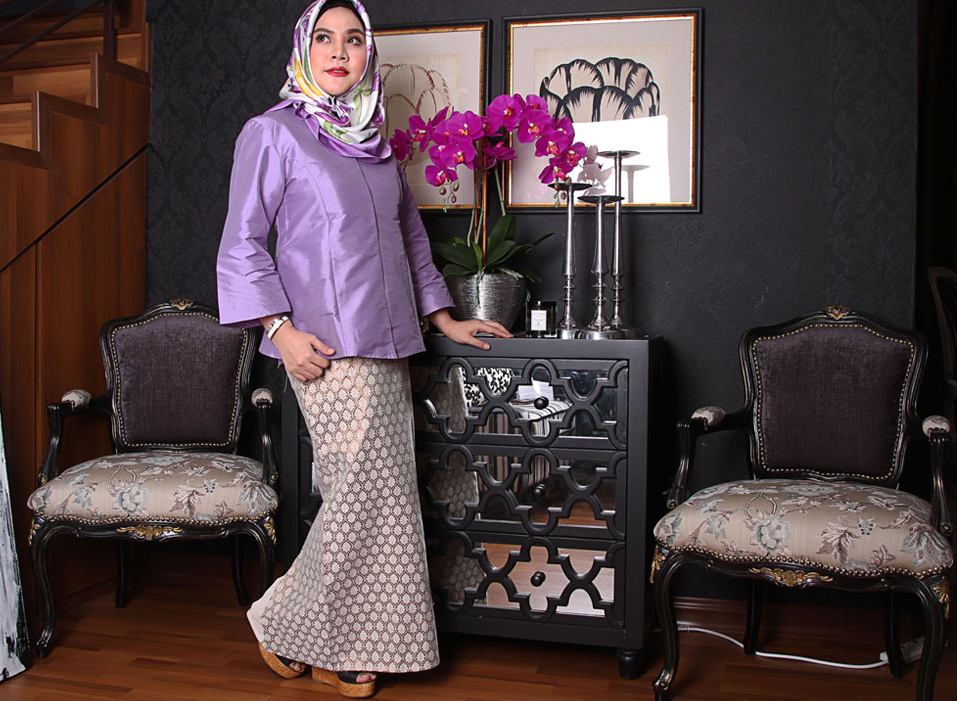
Before the 20th century, Malay women still wore kemban (sarungs tied above the chest) with shawl draped over their shoulders. However, Malay royalty used much finer hand-loomed textiles and intricate Malay batik as part of their attire.
As foreign trade thrived, different textiles, fabrics and costumes were introduced to the locals. Traders that made the most influential impact on the evolution of traditional Malay attire were from India, China, Middle Eastern countries and later Europe.
There are two types of traditional wear for Malay women, the Baju Kebaya and Baju Kurung. The word kebaya was said to come from the Arab word habaya, which means a long garment with a slit in front extending along its length. Because sarung is an important element of the Malay attire, the habaya is shortened so the women could wear it with kain sarung. The different types of Baju Kebaya are Baju Kebaya Labuh, Kebaya Labuh Nyonya Cina Peranakan dan India, and Kebaya Pendek/Kebaya Belah. The obvious difference between these types of kebaya is the length of the kebaya itself.
For Baju Kurung, we have Baju Kurung Teluk Belanga which was worn by both men & women over 100 years ago. Baju kurung Teluk Belanga is worn with kain sarung that was tied to form pleats on either side. One other baju kurung is the Baju Kurung Cekak Musang with its distinctive collar that was said to derive its influence from India & China. Baju Riau Pahang is another traditional Malay wear. It shares the cekak musang collar with the baju kurung cekak musang. There is also a simpler baju called Baju Kedah which is shorter & has a more relaxed fit.
From history, we can see that Malay men have less variation in their traditional attire. The most known traditional wear for Malay male is the Baju Melayu. Baju melayu as we know it today is a combination of baju kurung cekak musang worn with a pair of trousers. This baju is based on baju kurung Teluk Belanga, which was the official attire of the Malay male in Johor. Baju Melayu is traditionally worn with kain samping, a short sarung wrapped around the hips.
